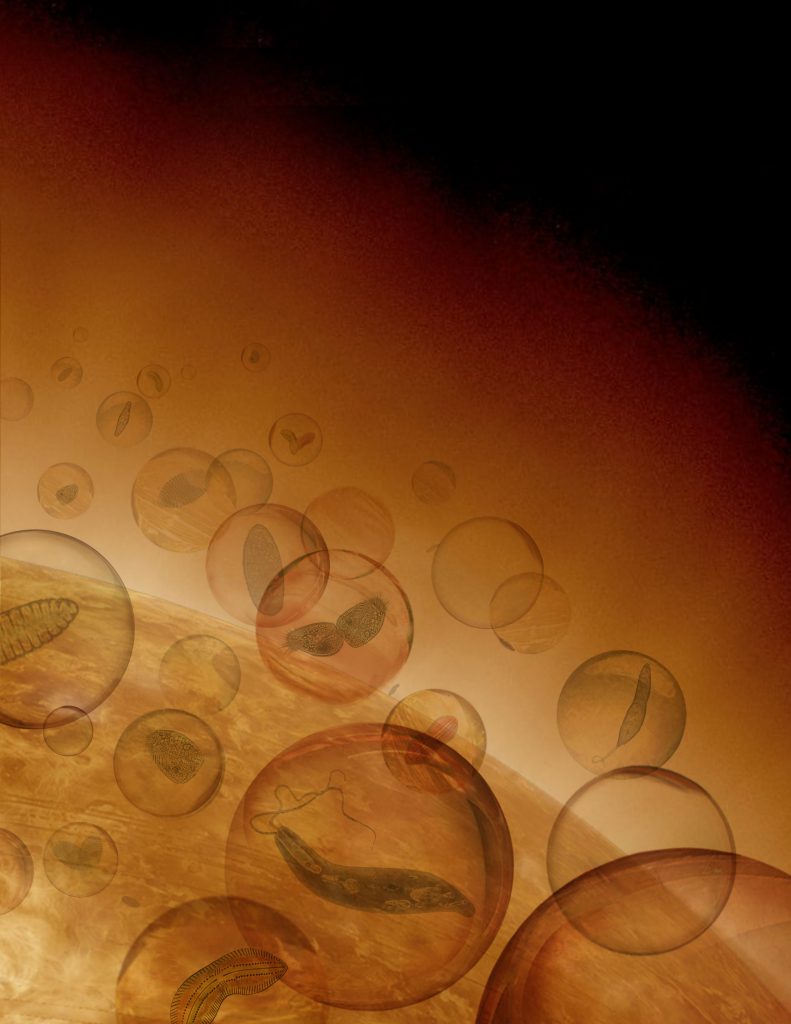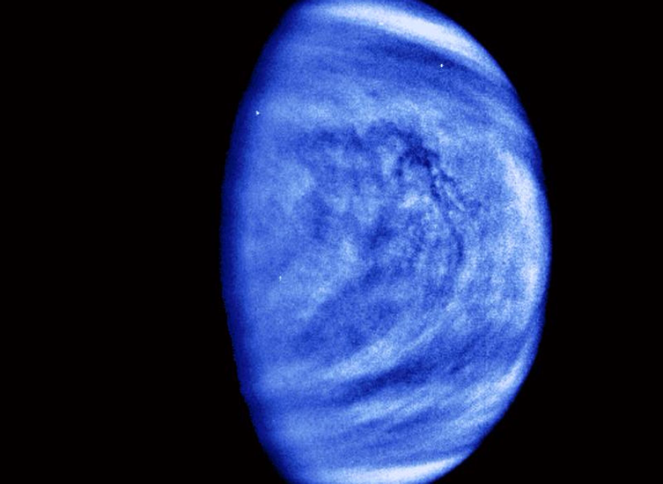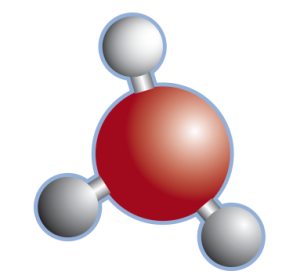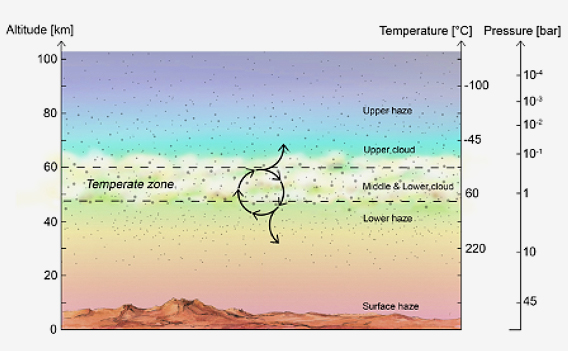Origin and evolution
How the Venusian clouds could have become inhabited is unknown. The most conceivable scenario is that life originated on the surface when Venus was a cool planet with water oceans. At that time, large numbers of microbes may have temporarily resided in the atmosphere, as they do on Earth. As Venus became hotter and hotter the planet eventually went into a “greenhouse runaway” where the oceans boiled off and the temperatures became inhospitable. The concept is that any surface life would have died off, while microbial life evolved to permanently live in the clouds.
Microbial Life in Venus’ Clouds
Any microbial life that might exist in Venus’ atmosphere will be so different than any Earth life in terms of its composition, because of the extreme conditions in Venus’ atmosphere. Conditions in Venus’ habitable atmosphere layer are fifty times drier than the driest place on Earth (the Atacama Desert) and billions of times more acidic than the most acidic environment on Earth (Ethiopia’s Dallol pools).

Mysterious Signals
An unknown chemical in the high-altitude clouds of Venus absorbs more than half of all ultraviolet (UV) radiation from the Sun that hits the planet. Researchers have puzzled over the identity of the UV absorber for over 30 years. Some have suggested that this unknown UV absorber may be a photosynthetic pigment of Venusian cloud-based life.

Image of Venus at ultraviolet and visible wavelength. The dark stripes are caused by an unknown ultraviolet absorber. Image credit: NASA
Detection of phosphine in Venus’ atmosphere

The recent unexpected detection of phosphine in Venus’ atmosphere adds to the speculation on the possibility of life in the clouds of Venus. On Earth, phosphine is only associated with life and no other non-life geological process makes phosphine. Nonetheless a claim that phosphine on Venus is caused by life is premature and warrants further aggressive investigation.
A Proposed Venus Life Cycle
A key question for life on Venus is how can microbial-type life persist aloft in the atmosphere for hundreds of millions to billions of years? Most discussions of life on Venus never address whether the life is free floating in the atmosphere or alternatively confined to the liquid environment inside cloud droplets. We argue life must reside inside liquid droplets, so that it will be protected from a fatal net loss of liquid to the atmosphere, an unavoidable problem for any free-floating microbial life forms. Yet, the droplet habitat poses a lifetime limitation: droplets inexorably grow (over a few months) to large enough sizes that are forced by gravity to settle downwards to hotter, uninhabitable layers of the Venusian atmosphere. We propose for the first time that the only way life can survive indefinitely is with a life cycle that involves microbial life drying out as liquid droplets evaporate during settling, with the small desiccated “spores” halting at and partially populating the Venus atmosphere stagnant lower haze layer (33-48 km altitude). We thus call the Venusian lower haze layer a “depot” for desiccated microbial life. The spores eventually return to the cloud layer by upward diffusion caused by mixing induced by gravity waves, act as cloud condensation nuclei, and rehydrate for a continued life cycle. For more information see this journal article (https://www.liebertpub.com/doi/full/10.1089/ast.2020.2244).

Atmosphere layers of Venus depicting the “habitable” layer of the atmosphere and a hypothesized lifecycle of microbial life that could persist in the atmosphere. Figure credit: Johanna Petkowska.
